
Menu

Menu


LA Dodger Stadium holds a unique allure for me, even though my baseball team allegiance lies elsewhere. I find this stadium to offer an incredible baseball experience.

Explore LA Dodger Stadium
- Lola Zoch
- May 17, 2024
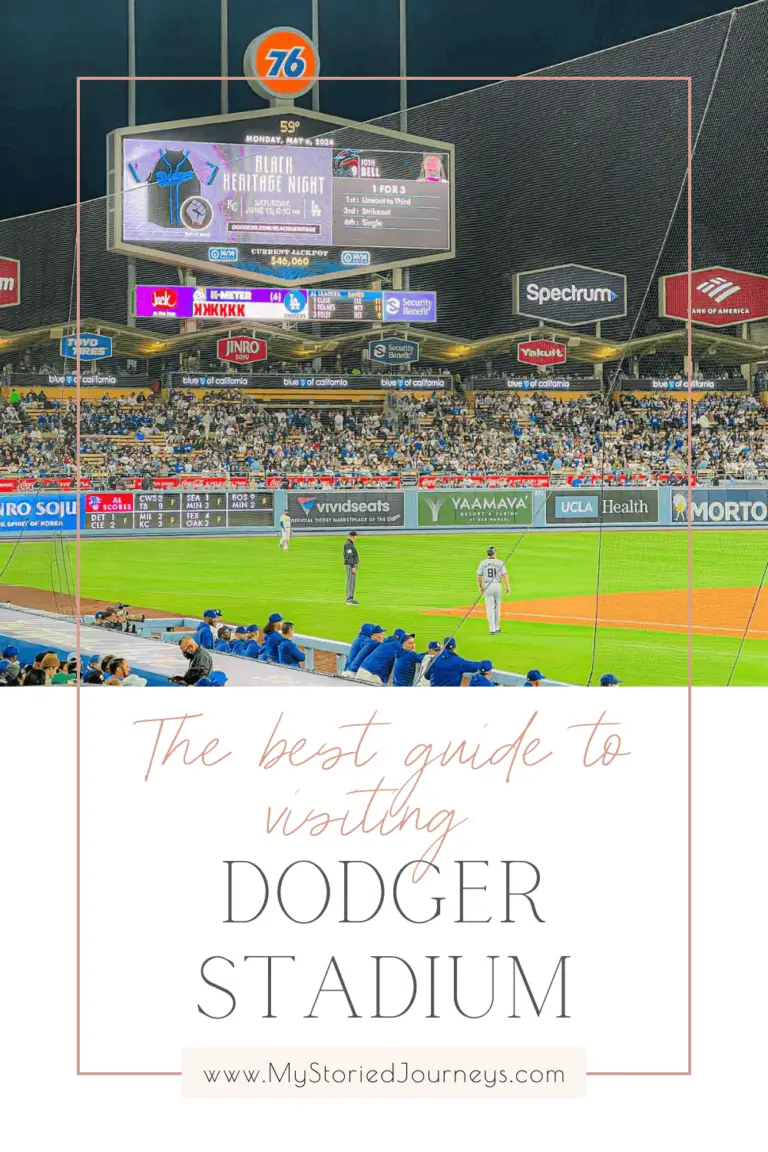
LA Dodger Stadium, the home of the Los Angeles Dodgers, has experienced recent renovations, beautifully reviving the stadium’s modern mid-century design, reminiscent of its opening era in 1962. The stadium and seats have been repainted to match the stadium’s original 1960’s color palette, to add a cohesive theme alongside the vintage relics like its firetruck and ice cream truck, retro signage, Tommy Lasorda’s Speakeasy and the abundant team memorabilia, creating a nostalgic yet modern atmosphere that I love exploring over and over.
Dodger Stadium, located in the vibrant heart of Los Angeles, is far more than just a baseball venue; it stands as a revered icon of American sports. Since its opening in 1962, the stadium has been the proud home of the Los Angeles Dodgers. Boasting panoramic views that encompass the city skyline and the majestic San Gabriel Mountains, Dodger Stadium’s setting is truly breathtaking. As the third-oldest stadium in Major League Baseball, following Fenway Park and Wrigley Field, and with a seating capacity exceeding 56,000, it stands as a testament to the enduring appeal of America’s favorite pastime. Dodger Stadium has a rich history, having hosted 25 postseasons and 10 World Series. Its illustrious past includes hosting notable figures such as The Pope, Elton John, Michael Jackson, and The Beatles, solidifying its status as a cultural landmark.
Visit LA Dodger Stadium Table of Contents
History of LA Dodger Stadium
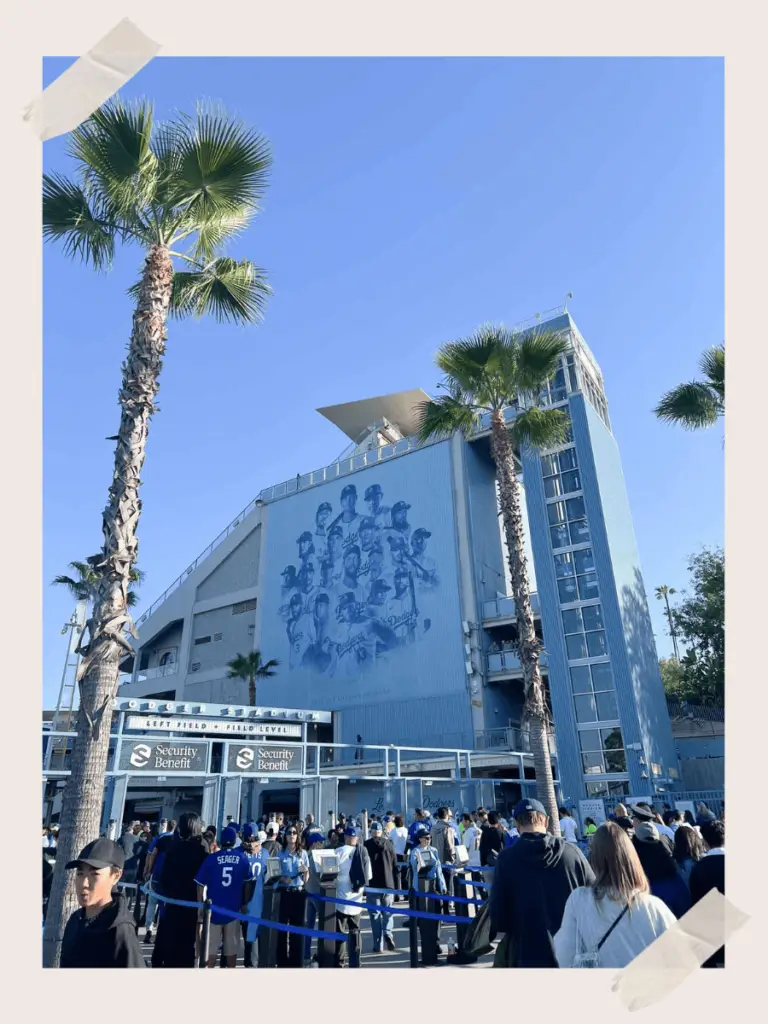
In the mid-1950s, Walter O’Malley, the president of the Brooklyn Dodgers, struck a deal with the city of Los Angeles to bring the team to LA. He had envisioned a dome in New York, but negotiations fell through, bringing the team across the country.
Los Angeles seized the land for the LA Dodger Stadium in the early 1950s through eminent domain, funded by the federal Housing Act of 1949. The city originally planned to develop the area into a public housing project.
However, the political landscape shifted, and public housing projects lost support. The city repurchased the Chavez Ravine property with the condition that the land be used for a public purpose.
In 1958, the Dodgers acquired 352 acres of Chavez Ravine from the city, but the acquisition led to the forceful eviction of residents. During the stadium’s construction, the Dodgers played at the Los Angeles Memorial Coliseum, the league’s largest venue at the time. The Stadium opened in 1962 at a total cost of $23 million.
Dodger Stadium was a milestone in stadium construction, being the first MLB stadium built entirely with private funding since the original Yankee Stadium. An interesting, fun fact about Dodger Stadium is that a local elementary school, Palo Verde, was buried rather than demolished and now lies beneath the parking lot northwest of third base.
Dodger Stadium remains an iconic landmark, symbolizing Los Angeles’s love for baseball and its complex history of urban development.
Dodger Stadium Most Instagrammed Stadium in the MLB
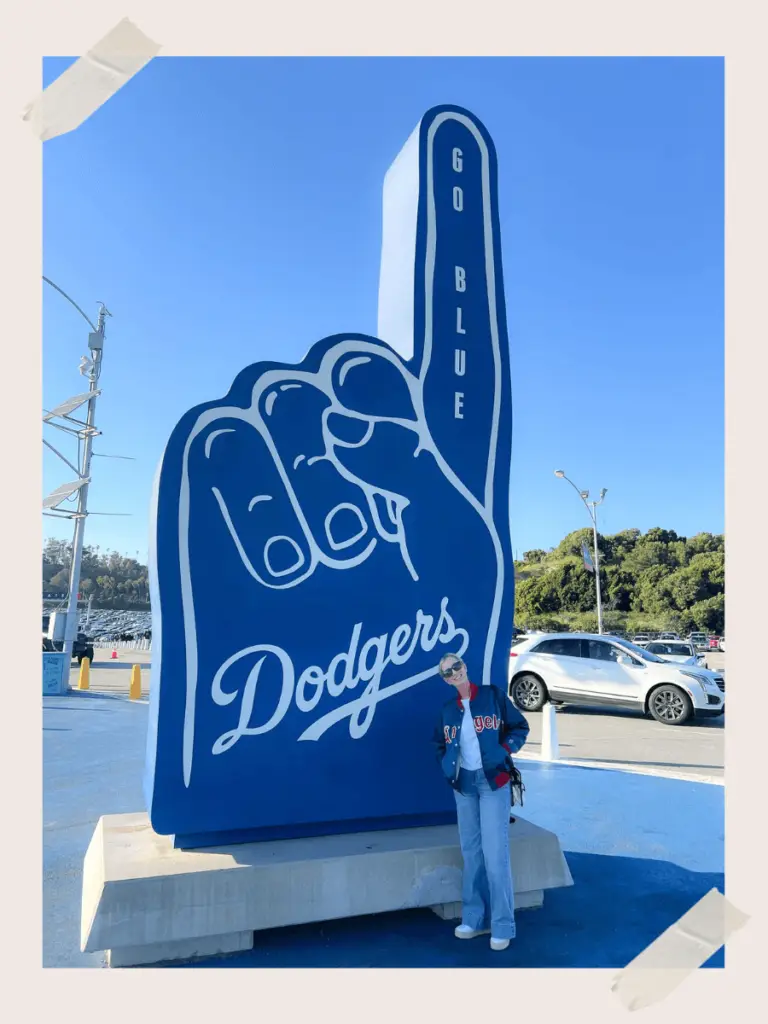
Today LA Dodger Stadium is seen on Instagram more than any other stadium in the MLB.
According to a study by aGamble, in 2023, Dodger Stadium was recognized as the most Instagrammed location in Major League Baseball. Instagram users tagged Dodger Stadium more than 2.5 million times.
Dodger Stadium Centerfield Plaza
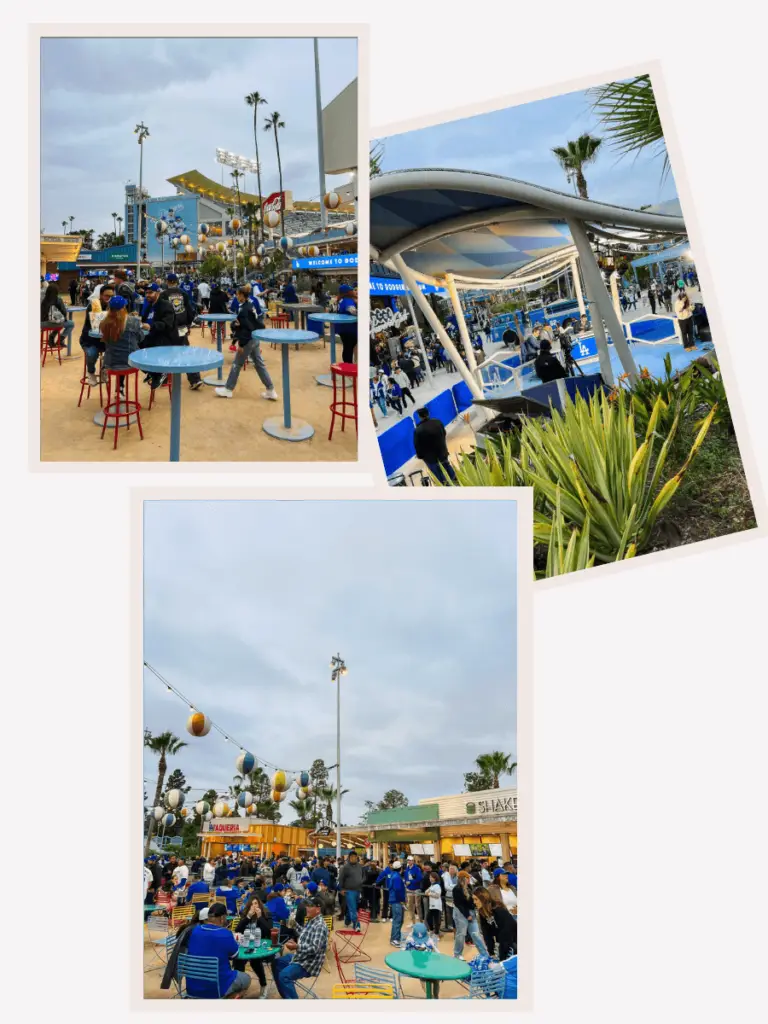
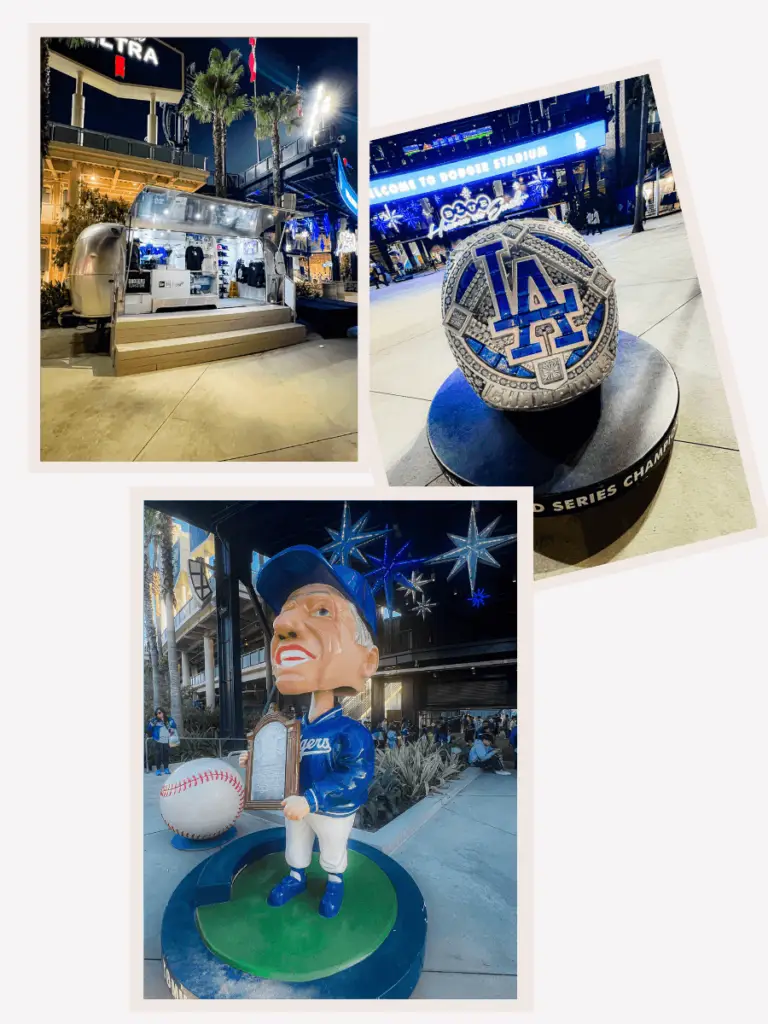
The Dodger Stadium Centerfield Plaza is really the Dodger Stadium Entrance Gates and my favorite part of the stadium. Renovated in 2021, this spacious plaza has nearly two acres of entertainment, dining, shopping and social areas, making it a vibrant gathering place. The Centerfield Plaza also pays tribute to Dodger history with statues and a permanent home for the “Legends of Dodger Baseball” plaques, adding a touch of nostalgia to the modern amenities.
Blue Heaven on Earth

At a speaking event for the 1998-99 edition of the Distinguished Speakers Series, former Los Angeles Dodgers manager Tommy Lasorda playfully referred to God as the “big Dodger in the sky” and affectionately dubbed Dodger Stadium as “blue heaven on earth.”
Dodger Stadium Jackie Robinson Statue
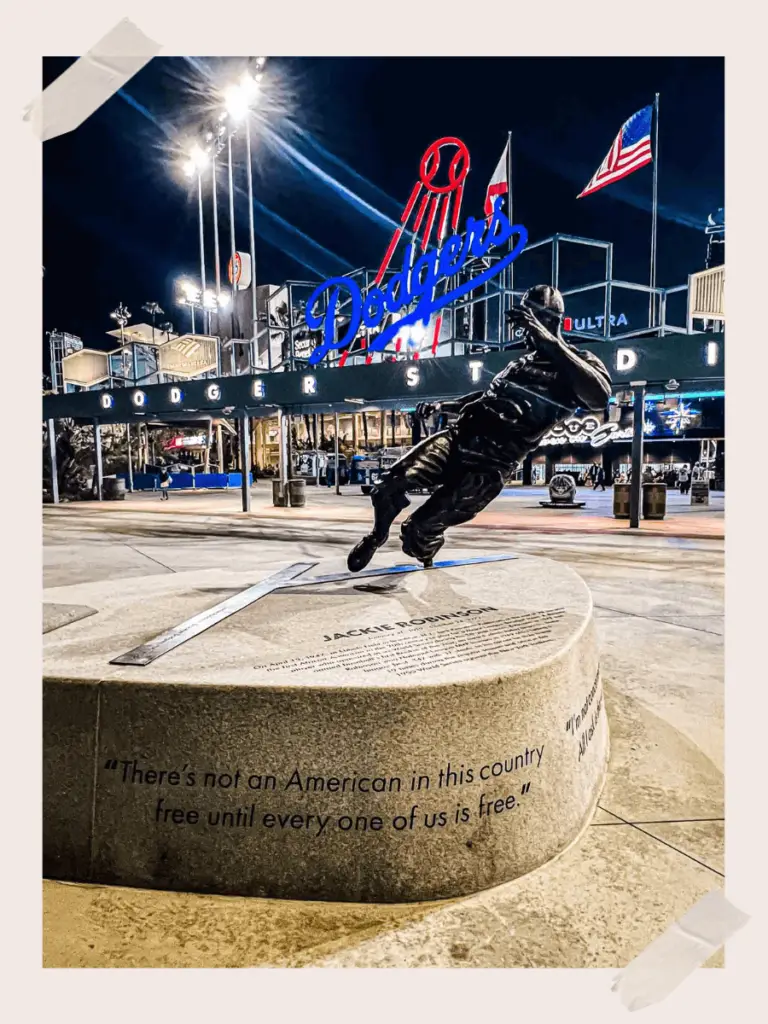
The Dodger Stadium Jackie Robinson statue stands as a symbol of equality. Unveiled in 2017 to commemorate the 70th anniversary of Robinson breaking baseball’s color barrier, the statue captures him in a dynamic pose, forever frozen in the moment of stealing home during his rookie season. Sculpted by Branly Cadet, this eight-foot bronze monument is a stunning tribute to Robinson’s legacy both on and off the field.
Dodger Stadium Sandy Koufax Statue
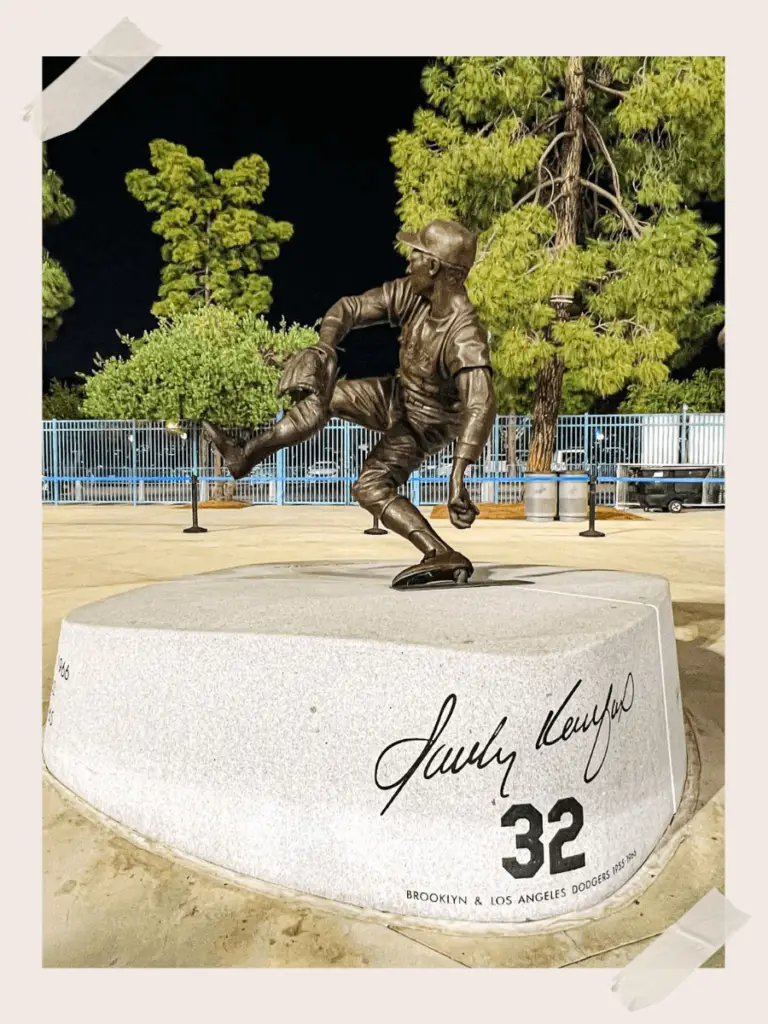
The Dodger Stadium Sandy Koufax Statue pays tribute to one of the greatest pitchers in baseball history. Positioned near the entrance to the reserve level, this statue captures Koufax in his iconic pitching motion, immortalizing his dominance on the mound. Koufax’s career with the Dodgers was nothing short of legendary, marked by multiple no-hitters, Cy Young Awards, and a reputation as one of the most feared pitchers of his era. Beyond his on-field achievements, Koufax’s statue symbolizes his impact on the game and his status as a cultural icon.
Lowrider Ice Cream Truck
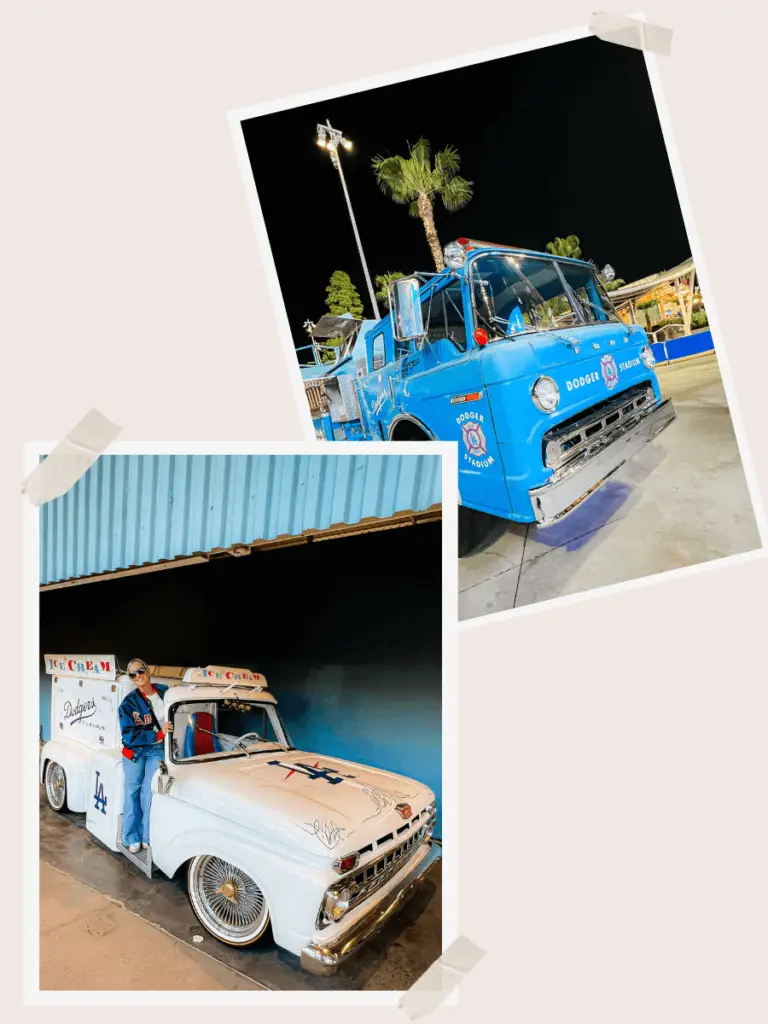
Dodger Stadium’s vintage lowrider ice cream truck and retrofitted fire truck that serves beer on tap, are charming nods to the stadium’s mid-century roots. These unique attractions add a touch of nostalgia and whimsy to the ballpark experience.
Tommy Lasorda Tribute Lockers
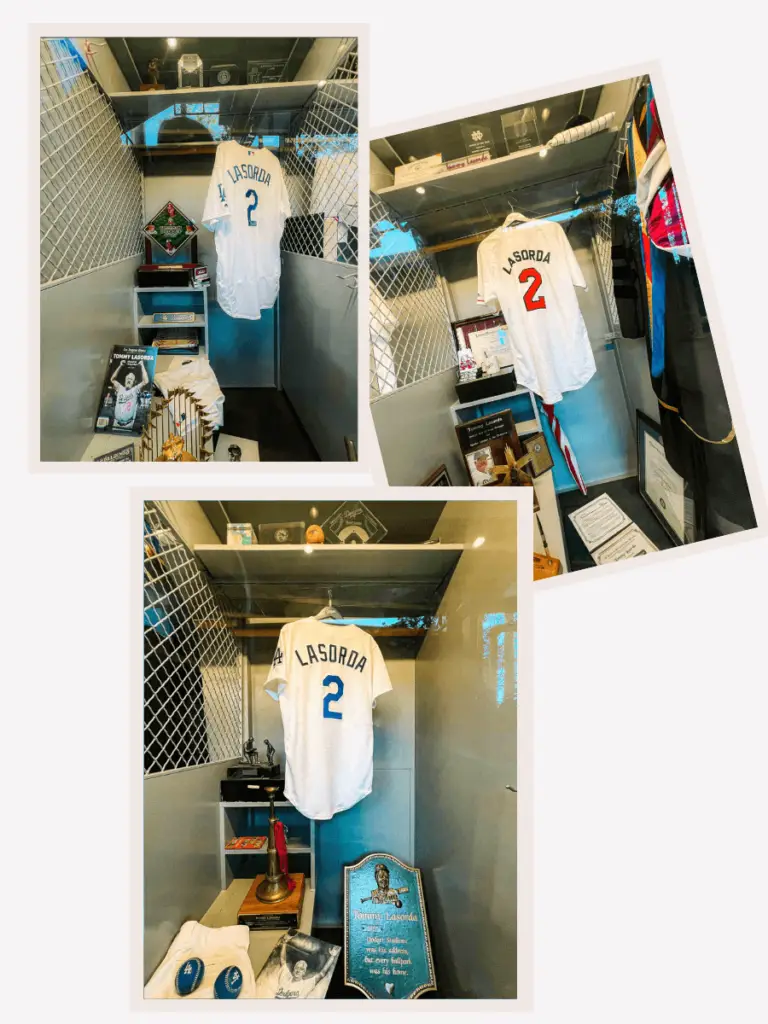
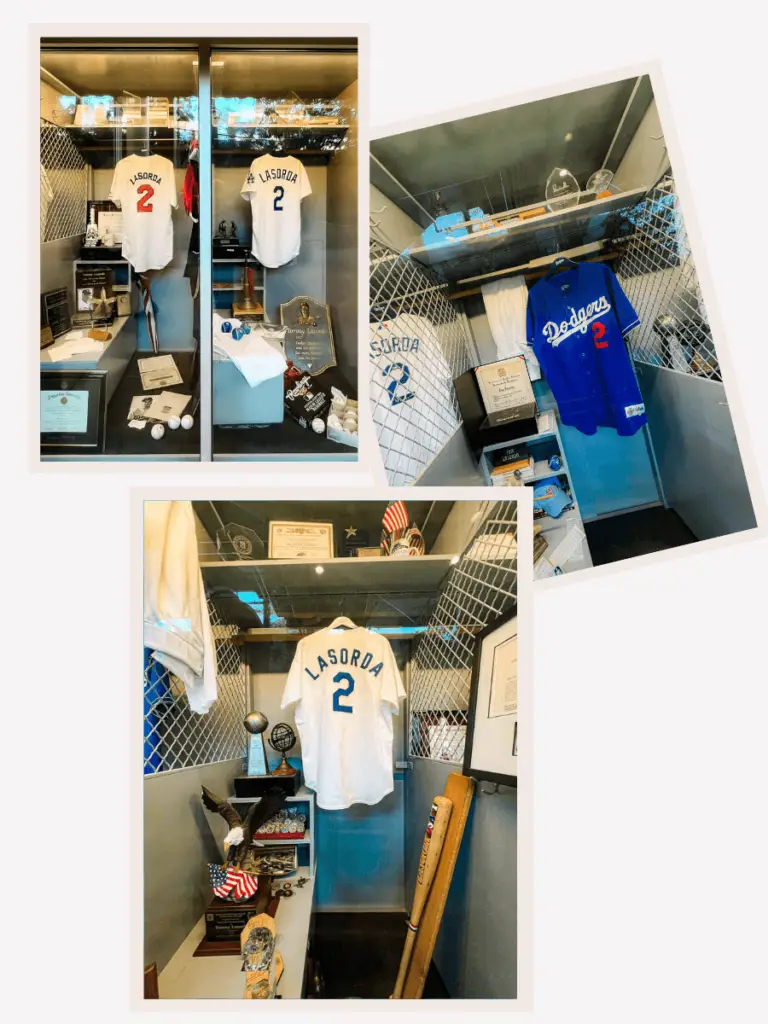
The Tommy Lasorda Tribute Lockers at Dodger Stadium pay homage to one of the most beloved figures in Dodgers history. As the team’s manager for over 20 years, Tommy Lasorda left an indelible mark on the franchise and the sport of baseball. Fans can explore Lasorda’s legacy by exploring the display lockers, on loan from his family, which offer a glimpse into the passion and dedication that defined his tenure with the Dodgers.
Fernando Valenzuela Tribute Wall
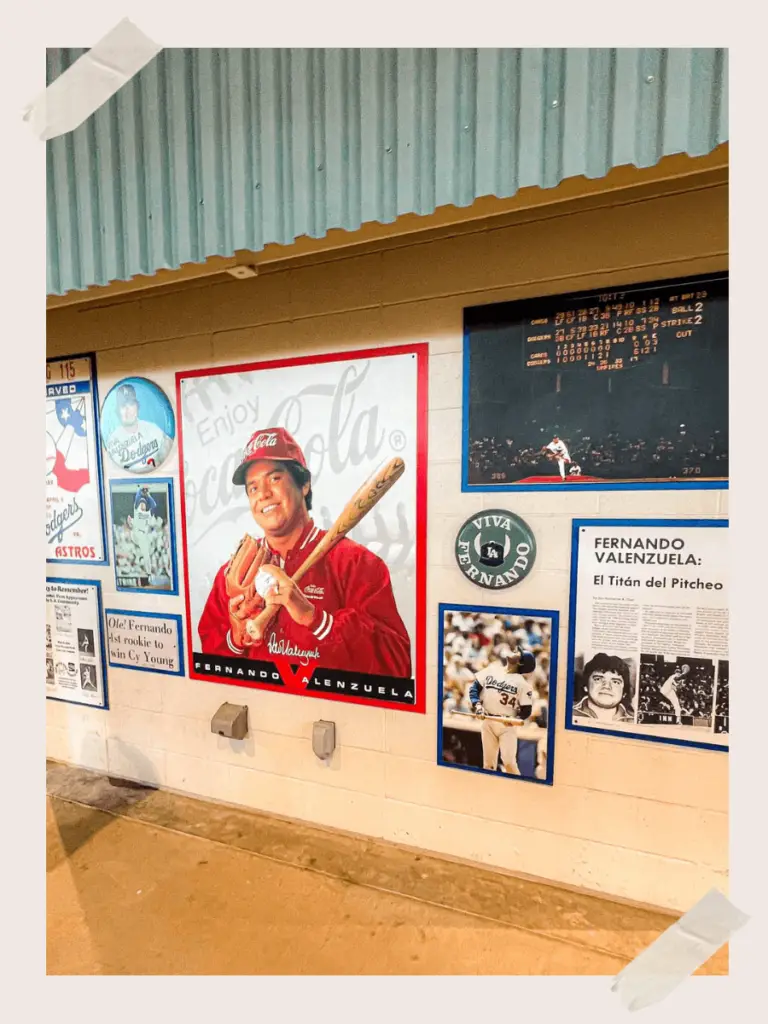
The Fernando Valenzuela Tribute Wall at Dodger Stadium is a heartfelt homage to one of the most beloved pitchers in Dodgers history. This tribute wall commemorates Valenzuela’s remarkable career and his enduring impact on the team and its fans. Valenzuela’s arrival in the 1980s sparked “Fernandomania,” captivating baseball enthusiasts with his exceptional pitching and charismatic presence. The tribute wall showcases highlights from Valenzuela’s career, including his Cy Young Award-winning seasons and his role in leading the Dodgers to a World Series victory in 1981.
Legends of Dodgers Baseball
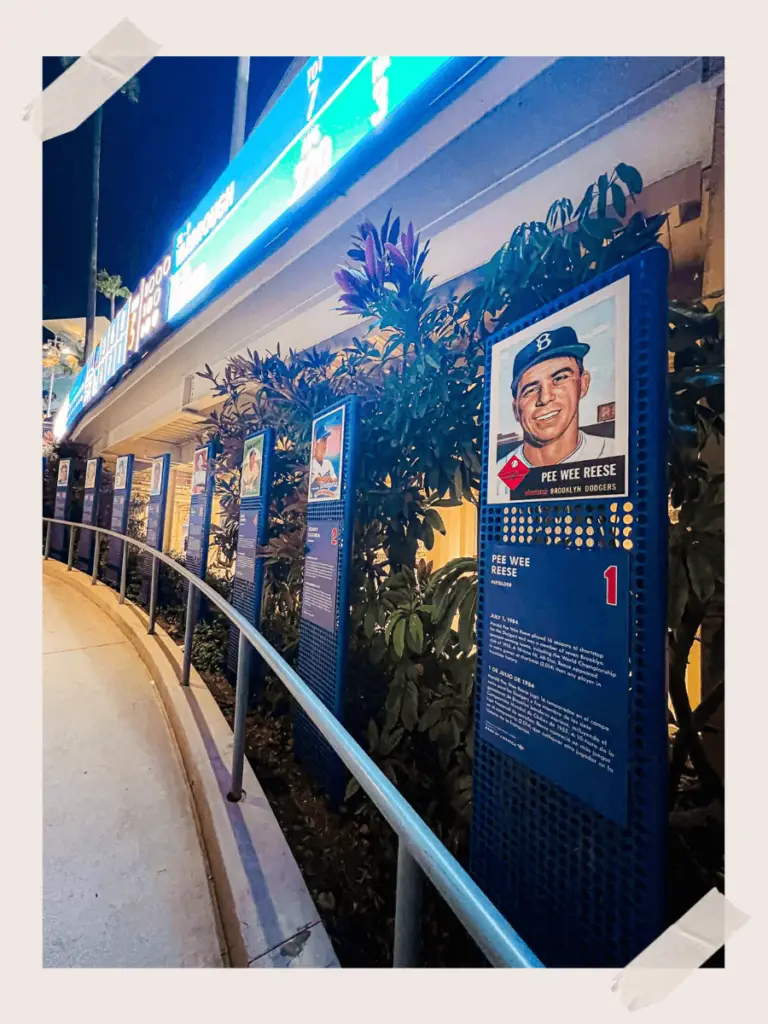
The Legends of Dodgers Baseball is a cherished tribute to the iconic players, coaches and executives who have left an indelible mark on the team’s history. Running along ADA ramps, oversized Rookie Of The Year player cards honor legendary Dodgers, celebrating their remarkable contributions to the team and the sport. Including PeeWee Reese, Tommy Lasorda, Gil Hodges, Duke Snider, Don Sutton, Jim Gilliam, Sandy Koufax, Walter Alston, Roy Campanella, Fernando Valenzuela, Jackie Robinson, Don Drysdale, Jaime Jarrin and Vin Scully.
Spectrum Sports Net LA Stage
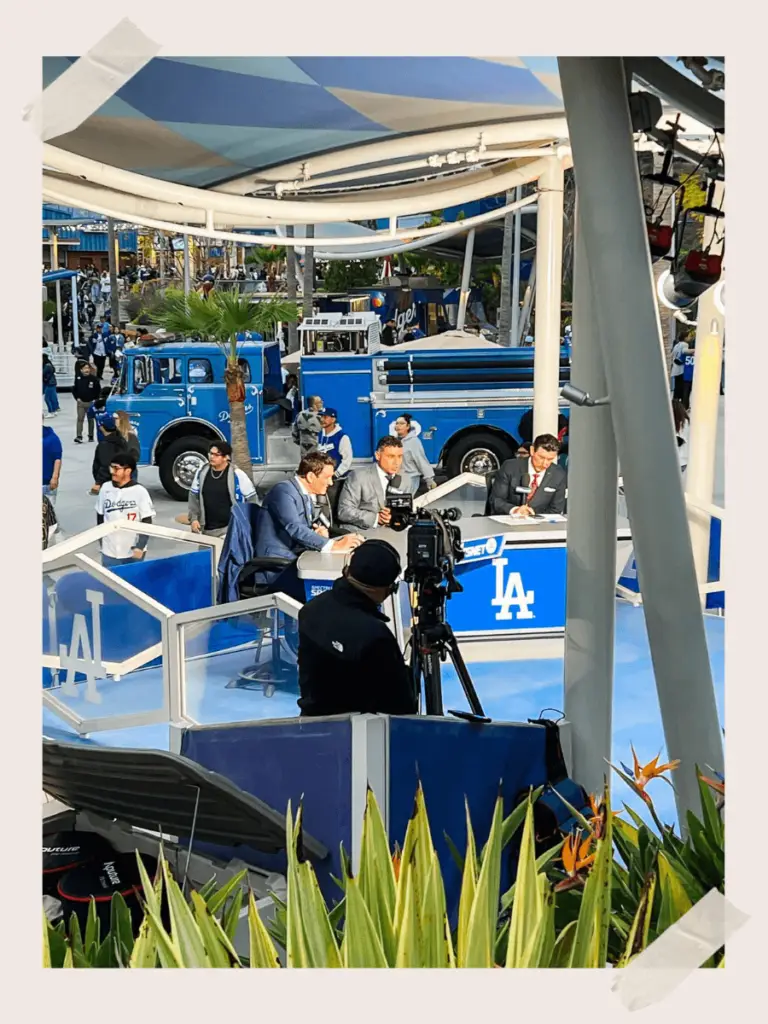
The new outdoor Spectrum Sports Net LA stage/studio, located in the recently renovated centerfield plaza at Dodger Stadium, is a dynamic addition to the ballpark’s amenities. This state-of-the-art facility serves as a hub for pre-game and post-game coverage. Fans can enjoy the excitement of live broadcasts while soaking in the sights and sounds of the ballpark. The studio’s location in the centerfield plaza.
Dodger Stadium Speakeasy
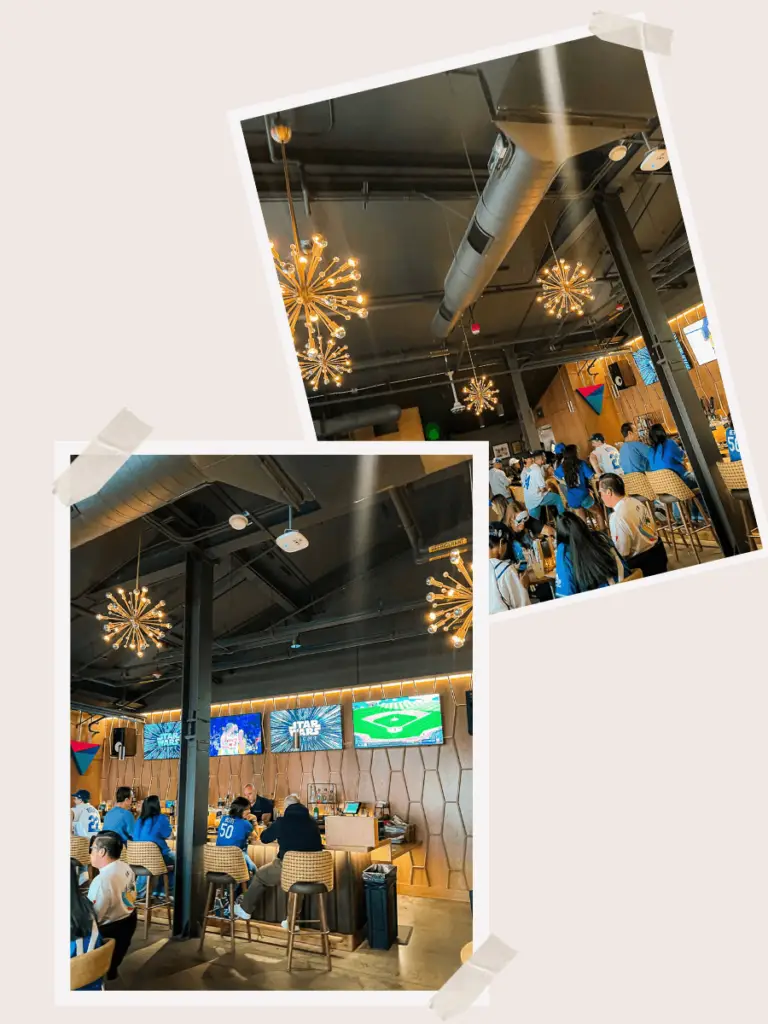
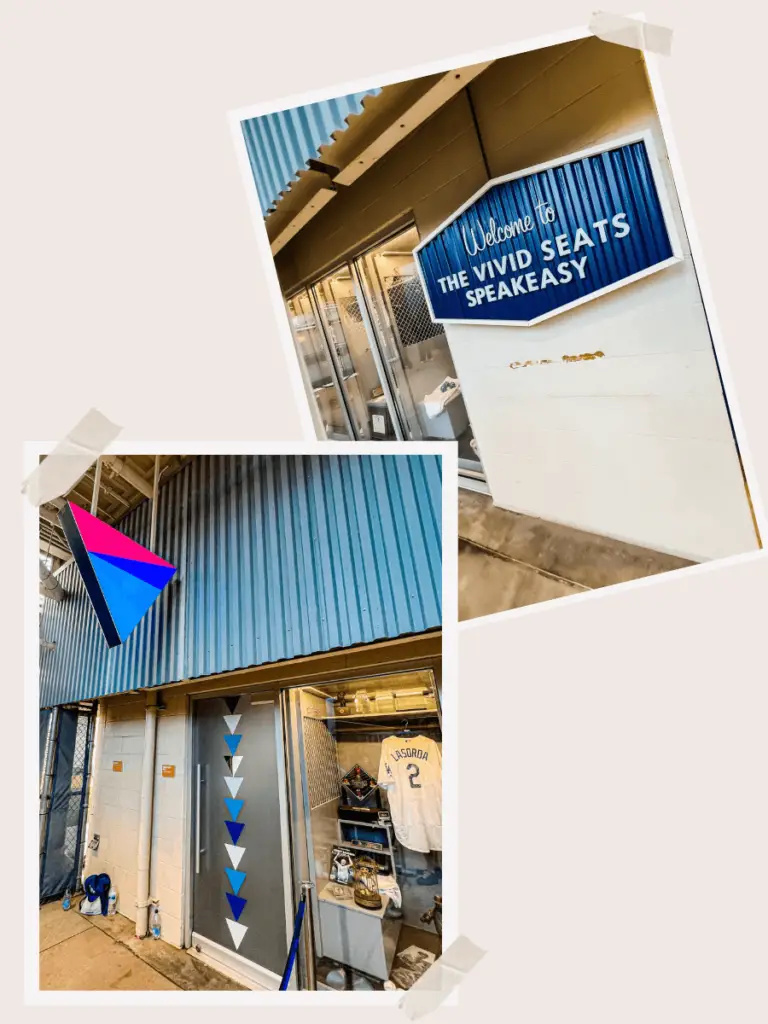
The Dodger Stadium speakeasy is a secret gem that offers a unique and exclusive experience for fans. Located within the stadium, this MEMBERS-ONLY private bar, also known as Tommy’s Bar, provides an intimate setting reminiscent of a mid-century speakeasy. To enter, guests must be a member, have a reservation and know the secret password, “Lasorda,” adding an element of mystery and excitement to the experience.
Food at Dodger Stadium
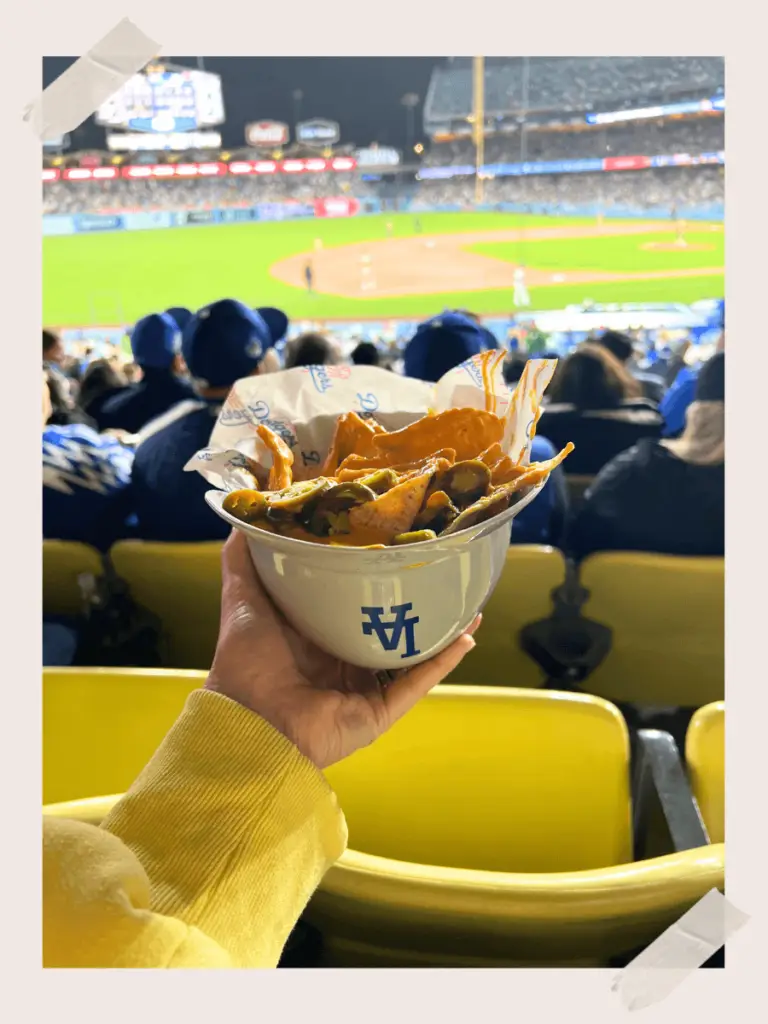
Dodger Stadium offers a diverse array of food options that cater to every palate. From classic ballpark fare like hot dogs and peanuts to gourmet dishes and international cuisine. The stadium is known for its iconic Dodger Dogs, a must-try for any visitor.While Farmer John is no longer the hot dog provider at Dodger Stadium, the iconic Dodger Dog continues to be a fan favorite, now served by Papa Cantella.For those looking for something more adventurous, there are plenty of unique options, including sushi, BBQ, and vegetarian dishes.
Dodger Stadium Food 2024:
LA Feeds Blue
Shake Shack
Mastercard Food Truck (Centerfield Plaza)
LA Taqueria
Jeff’s Kosher
Dueling Dogs
Estrella Bar
Think Blue BBQ
DH Delicious Hospitality
Traditional Dodger Dog
Fan Fare
Elysian Park Grill
Traditional Dodger Dog
Tsukiji Gindaco
7th Inning Sweets
Flamin’ Hot Corner
Home Plate pizza
Hornitos Cantina
Home Plate pizza
Grand Slam Grill
Dodger Dog Express
Dodger Dog Traditional
Craft Corner (
King’s Hawaiian
Craft Corner
Trolley Treats
Home Plate Pizza
Jinro
Dodger Dog Express
Chicken Change-Up
Strikeout
King’s Hawaiian
Dodger Dogs
Top Deck Dogs
Seating at Dodger Stadium
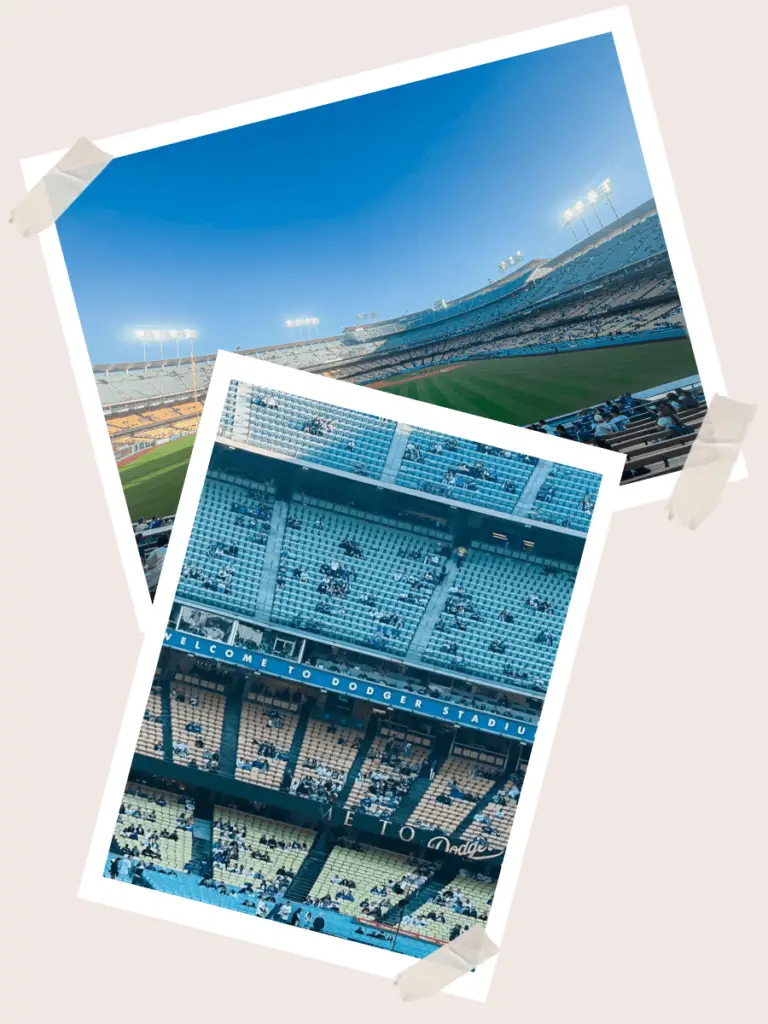
Dodger Stadium boasts a variety of seating options, each offering a unique perspective of the game and the surrounding views. The stadium’s original blue color scheme sets a vibrant backdrop, complemented by the lush green outfield and the iconic San Gabriel Mountains in the distance. Fans can choose from traditional stadium seats, which provide a classic baseball experience, to more premium options.
Coca-Cola Home Run Seats
The Coca-Cola Home Run Seats, located just beyond the outfield wall in the outfield pavilions, offer a close-up view of the action, particularly during home run plays. Guests seated here can enjoy the convenience of drink rails and padded barstools, along with complimentary in-seat wait service for classic ballpark snacks.
Lexus Baseline Club
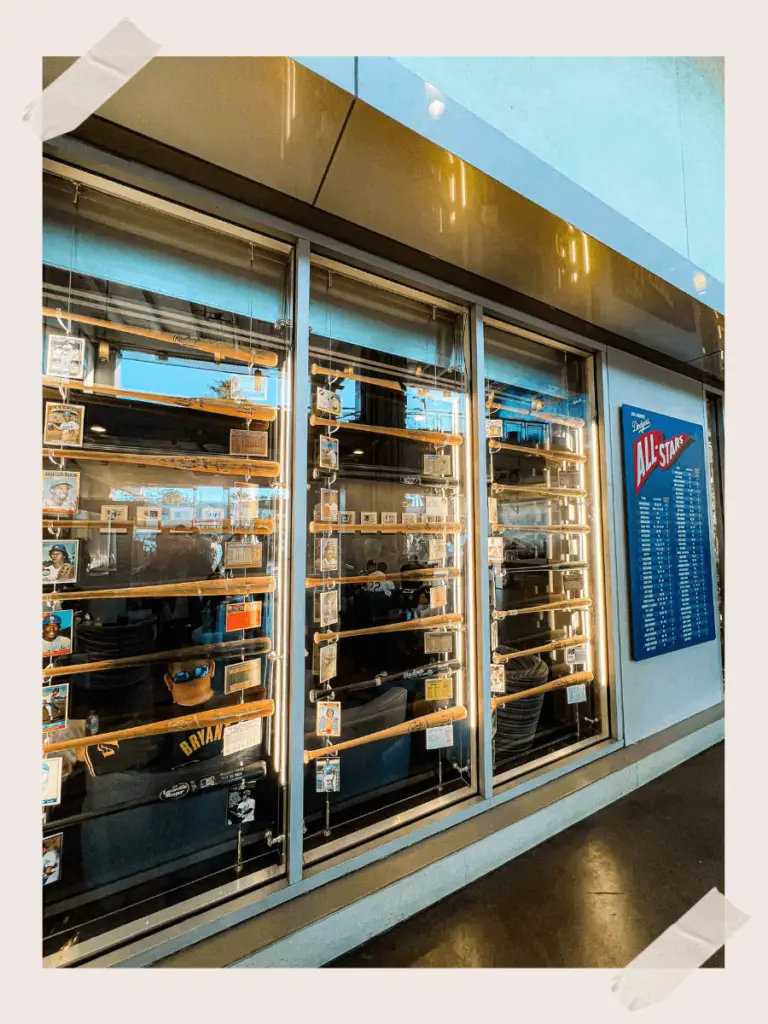
Ticket holder perks for the Lexus Baseline Club include the widest and most comfortable seats at Dodger Stadium, tabled seating, all-inclusive food and soft drinks, in-seat waiter service, private restrooms, concierge service, complimentary game programs, personal storage for guests, and access to the furnished and climate-controlled Baseline Club equipped with dining areas, private bars, and flat-screen HD televisions.
Yaamava' Dugout Club

The Yaamava’ Dugout Club by San Manuel stands as the most exclusive club at Dodger Stadium, offering premier seating options. Ticket holders for the Yaamava’ Dugout Club gain access to the Dugout Club, featuring complimentary food and non-alcoholic beverages, a full bar, in-seat service, private restrooms, and restaurant-style seating. This club provides a premium and immersive experience for baseball enthusiasts. Positioned just steps away from the Dodgers’ dugout, this exclusive club offers unparalleled views of the on-field action. Guests can indulge in a variety of gourmet dining options, signature cocktails, and a curated selection of wines and spirits.
LA Dodger Stadium Facts
Dodger Stadium Address – 1000 Vin Scully Ave, Los Angeles, CA 90012
Dodger Stadium Website – www.mlb.com/dodgers
Dodger Stadium Seating Chart – www.mlb.com/dodgers
Dodger Stadium Tickets –www.mlb.com/dodgers
Stadium Capacity – 56,000
MLB Team – Los Angeles Dodgers
MLB League – National League West
Dodger Stadium Opened – 1962
Dodger Stadium Cost to Build – $23 Million
Dodger Stadium Field Dimensions – 330-L, 400-C, 300-R
Dodger Stadium Turf – Grass
Dodger World Series Wins – 2020, 1988, 1981, 1965, 1963, 1959, 1955
LA Dodger Stadium FAQ
When is the Dodger Stadium Store Open?
The Top of the Park Official Team Store is situated on the Top Deck behind home plate and operates from Monday through Sunday, 10:00 a.m. to 5:00 p.m. Additionally, the store remains open during all Dodger home games. Fans attending games can also explore other official team store locations within the stadium, including the Official Team Store Left Field on the Field Level, the Majestic Official Team Store on the Reserve Level in left field, the New Era Official Team Store on the Field Level in right field, the Official Team Store on the Loge Level in right field, and the Nike Official Team Store on the Loge Level in left field.
When was Dodger Stadium Built?
Dodger Stadium was built in 1962 and opened on April 10th of that year.
What is the seating capacity of Dodger Stadium?
Dodger Stadium can seat approximately 56,000 fans, making it one of the largest stadiums in Major League Baseball.
Can I bring my own food and drinks into Dodger Stadium?
Fans are allowed to bring in food and non-alcoholic beverages in small, single-serving containers. However, glass containers, cans, and alcoholic beverages are not permitted.
What is the best way to get tickets to a Dodgers game at Dodger Stadium?
Tickets to Dodgers games can be purchased online through the team’s official website, or at the stadium’s box office on game days. It’s recommended to purchase tickets in advance, especially for popular games or events.
What Time Can I Enter Dodger Stadium?
My Dodgers Members can enter Dodger Stadium 3 hours prior to game time. Early entry takes place at the Left Centerfield Pavilion. A valid, digital Rewards card grants the Member early entry. There will not be early entry for any game that begins prior to 1:30PM.
Are Bags or Purses allowed in Dodger Stadium?
Backpacks, bags, purses, are no longer allowed inside the stadium. However clutches, no larger than 5”x8”x2,” diaper bags, and clear plastic bags smaller than 12”x12”x6”, are allowed. All permitted bags are subject to search.
Does Dodger Stadium Have All Gender Restrooms?
All-Gender Restrooms can be found at various locations throughout the ballpark: • Loge Level – Sections 152 and 153 • Suite Level – Across from Suite 211 and the Champions Lounge • Reserve Level – Sections 31 and 32 • Top Deck – Between the Top of The Park store and the restrooms • Center Field – Left Pavilion and Right PavilionChild Tickets
Can You Tailgate at Dodger Stadium?
Tailgating, defined as consuming food and alcoholic beverages or congregating on Dodger Stadium property, is prohibited. This includes any activity in the parking lots. To ensure safety and prevent fire hazards, the Dodgers prohibit disorderly conduct, noise disturbances, tailgating, or picnicking in any of the parking lots before, during, or after an event.
How Much Does It Cost To Park At Dodger Stadium?
General parking at Dodger Stadium is available for $30 per vehicle for both automobiles and motorcycles. Purchase in advance to get through quicker and avoid extra fees.
Exterior parking for select Dodger home events is available for just $5 in Lots 13 and 14. These first-come, first-served lots are situated offsite on Stadium Way, between Vin Scully Avenue and the 110 Freeway. From the parking lot is a short uphill walk.
Preferred parking at Dodger Stadium starts at $60 and is recommended to be purchased in advance.
Oversize Vehicle Parking at Dodger Stadium, which includes buses, motorhomes, limousines, and other large vehicles, is available for $60 and should be purchased in advance.
How Many Bobbleheads are Given Away at Dodger Stadium?
Giveaways are given to the first 40,000 fans (one per person) or while supplies last.
Does Dodger Stadium Have A Shuttle?
The Dodger Stadium Express provides free transportation for fans at two locations – Union Station or the South Bay.
What is Dodger Stadium Address?
1000 Vin Scully Ave, Los Angeles, CA 90012
Visiting LA Dodger Stadium is more than just attending a baseball game; it’s an experience steeped in history and tradition. From the moment you set foot in the stadium, you’re surrounded by the echoes of baseball legends and the energy of passionate fans. The iconic design, picturesque backdrop, and diverse food options make it a destination worth exploring. Whether you’re a die-hard baseball fan or simply looking for a fun outing, Dodger Stadium offers something for everyone. So, next time you’re in Los Angeles, be sure to catch a game at Dodger Stadium and immerse yourself in the magic of America’s pastime.